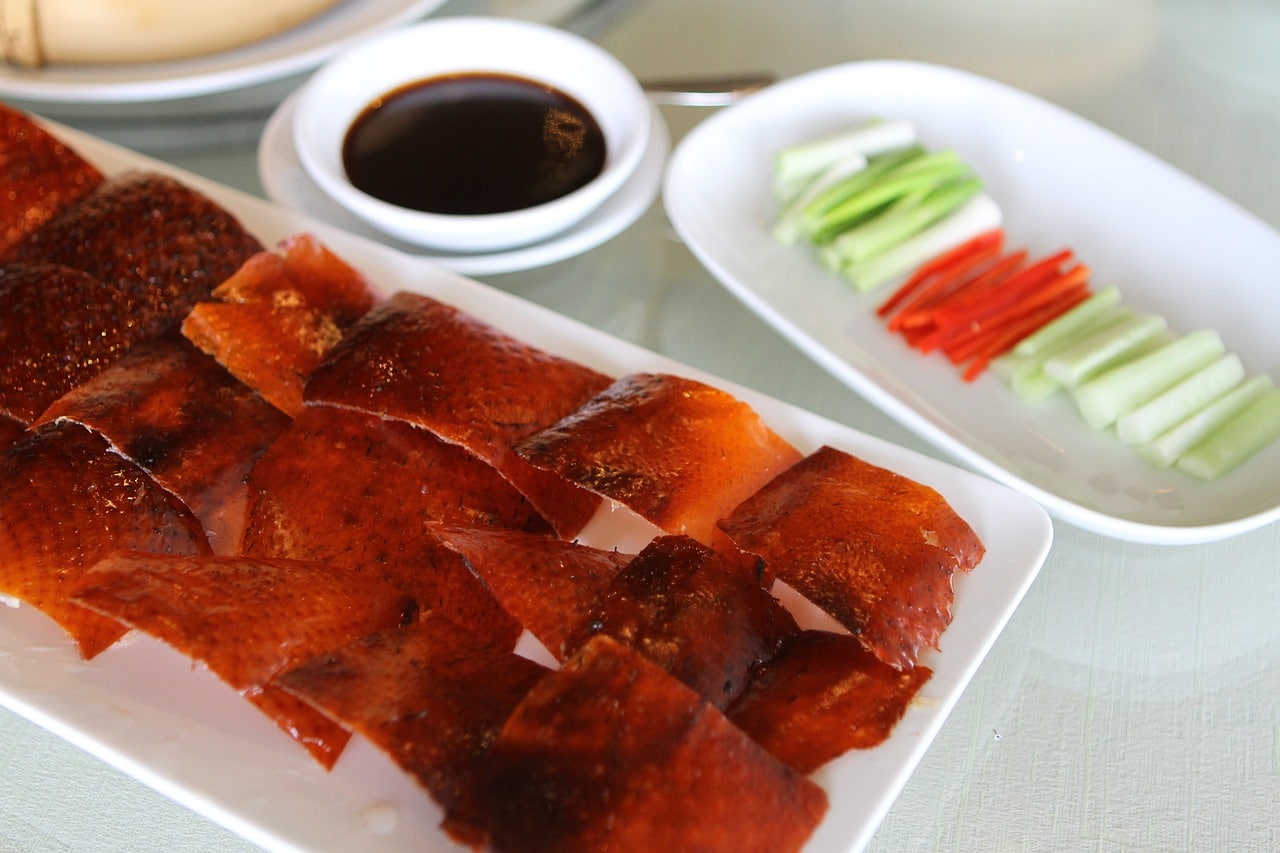
Peking Duck, a national dish of China, is a culinary delight that has been savored for centuries. This delicacy, known for its crispy skin and tender meat, is steeped in history and tradition.
The preparation of Peking Duck involves an intricate process that showcases the artistry inherent in Chinese cuisine. It’s not just about taste; it’s about the experience—from the cooking process to the presentation at the table.
Our team at Remitly created this guide as part of our series that celebrates the traditional foods of our global customers.
The History of Peking Duck
Peking Duck dates back to the Northern and Southern dynasties (386–589), where it was served at imperial courts. Its popularity grew during the Ming Dynasty, when it became a staple at royal banquets.
The dish continued to be favored by emperors and their guests throughout history. Its name “Peking” comes from Beijing, which was formerly romanized as Peking.
The Art of Preparing Peking Duck
Preparing Peking Duck is an art form that requires skill and patience. The duck is first marinated with spices before being hung up to dry. A unique aspect of this process involves inflating the duck through its neck to separate the skin from the fat.
Once dried, it’s roasted until it achieves a glossy brown finish. This meticulous process results in a duck with crispy skin and succulent meat—a combination appreciated by food connoisseurs worldwide.
Traditional Ingredients in Peking Duck
The traditional ingredients used in preparing Peking Duck are simple yet effective in bringing out its distinctive flavor. Besides the duck itself, honey or maltose syrup is often used for glazing to achieve that signature shiny look.
Spices such as star anise, ginger, and spring onions are also commonly used for marination. These ingredients contribute to enhancing both the aroma and taste of this celebrated dish.
Recipe for Peking Duck
Making Peking Duck at home can be a rewarding experience. Here’s a basic recipe to get you started.
Ingredients:
- One 5-pound duck
- 1 tablespoon of Chinese five-spice powder
- 1 teaspoon of salt
- 1/2 cup of honey or maltose syrup
- 4 cloves of garlic, minced
- A small piece of ginger, grated
- Spring onions for garnish
Instructions:
- Begin by cleaning the duck thoroughly and patting it dry.
- Rub the inside of the duck with salt and Chinese five-spice powder.
- Inflate the duck through its neck using an air pump to separate the skin from the fat.
- Hang up the duck in a cool, dry place for about 24 hours to let it dry completely.
- Preheat your oven to 350°F (175°C).
- Glaze the duck with honey or maltose syrup before placing it in the oven.
- Roast for about an hour until it turns glossy brown, basting occasionally with more glaze.
- Let it rest for about 15 minutes before carving into thin slices.
Remember that making Peking Duck is an art form that requires patience and precision.
How to Serve and Enjoy Peking Duck
Peking Duck is traditionally served in three courses. The first course features thin slices of crispy skin served with sugar or garlic sauce. The second course consists of the meat, usually sliced thinly and accompanied by steamed wraps, spring onions, and sweet bean sauce.
The final course typically involves a soup made from the remaining bones of the duck. This multi-course serving style allows diners to appreciate different aspects of the duck in each course.
Variations of Peking Duck Across China
While Beijing remains synonymous with this iconic dish, variations exist across China, reflecting regional preferences. In Shanghai, for instance, the duck is often marinated with soy sauce and sugar before roasting.
In Sichuan province, known for its spicy cuisine, Peking Duck may be served with a chili-based sauce. These variations add to the richness of the Chinese culinary tradition while maintaining the essence of the original dish.
Famous Restaurants for Peking Duck in China
China boasts numerous restaurants renowned for their Peking Duck. Quanjude and Bianyifang are two such establishments in Beijing that have been serving this delicacy for over a century.
These restaurants have preserved traditional cooking methods while adapting to modern tastes. They offer an authentic experience that allows visitors to appreciate this iconic dish in its birthplace.
The Broader Cuisine of China
Chinese cuisine is as diverse as its geography and culture, offering a wide array of flavors and dishes that reflect regional preferences.
Regional Variations
From spicy Sichuan dishes to sweet Cantonese desserts, each region has its unique culinary traditions. Northern China favors wheat-based foods like noodles and dumplings, while Southern China leans towards rice-based dishes.
Popular Dishes
Beyond Peking Duck, other popular Chinese dishes include Dim Sum—bite-sized portions served in steamer baskets; Mapo Tofu—a spicy tofu dish from Sichuan province; and Xiao Long Bao—soup dumplings from Shanghai.
Chinese Food Culture
Food plays a central role in Chinese culture. It’s not just about sustenance, but also about community, celebration, and tradition. From family gatherings to festivals, food is an integral part of social interactions.
Visit the homepage, download our app, or check out our Help Center to get started.